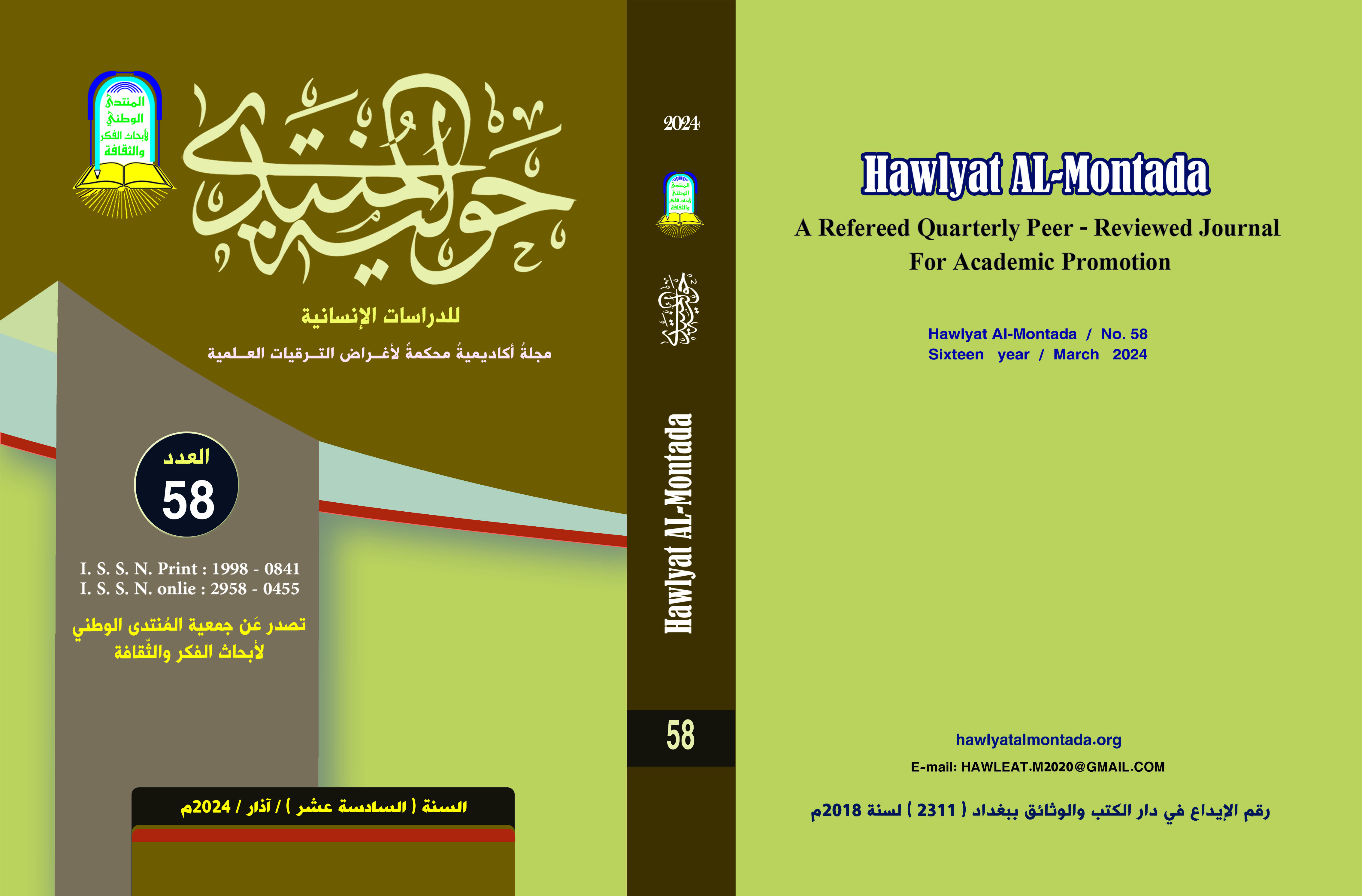Abstract
This research studies how poets finish their poems, in terms of style, and aesthetic artistic techniques in the ancient Arabic poem, in an applied aesthetic study, based on the question: How do poets finish their poems, where the poet presents the image of the poetic example, and the human example: the ideal woman, The example ruler, and the ideal man, in an impressionistic image of man, and thus the poet achieves a connection between the poem and the purpose of composing the poem, as this poem takes the nature of research in the aesthetics of composition and poetic ending, though, the impressionistic image, or he ends the poem in a picture A mindset that searches for the wondrous, amazing and unrealistic fantasy, in a second dimension of the poetic ending dimensions.
Keywords
Impressionist imagery
mental imagery
poetic example
the spectacular.
Abstract
يدرس هذا البحث، كيفية إنهاء الشعراء لقصائدهم، من حيث الأسلوب، و التقنيات الفنية الجمالية في القصيدة العربية القديمة، في دراسة جمالية تطبيقية، انطلاقاً من السؤال : كيف ينهي الشعراء قصائدهم، حيث يقدم الشّاعر صورة المثال الشعري، و المثال الإنساني: المرأة المثال، الحاكم المثال، و الرجل المثال، في صورة انطباعية عن الإنسان، وهكذا يحقق الشّاعر ارتباطاً بين القصيدة و الغاية من تأليف القصيدة، حيث تأخذ هذه القصيدة طابع البحث في جماليات التأليف و الأنهاء الشعري، من خلال، الصورة الانطباعية، أو أنه ينهي القصيدة في صورة ذهنية تبحث عن العجيب والمدهش و الخيالي غير الواقعي، في بعد ثاني من أبعاد الإنهاء الشعري
Keywords
الصورة الانطباعية
الصورة الذهنية
العجيب.
المثال الشعري
